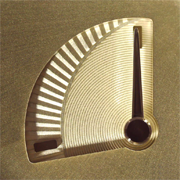How to properly remove Second Wheel arbor extension
-
Recently Browsing
- No registered users viewing this page.
-
Topics
-
Posts
-
By Neverenoughwatches · Posted
Haha yes you do have to reel in your bidding enthusiasm Michael. I use a " not enough time policy " to restrict myself or else known as sniper bidding. Decide what you are most prepared to bid and place it 7 seconds before the end, cross your fingers ,job done . The price paid here i would say was top figure another day could have been $40 -
By RichardHarris123 · Posted
The question is did Baum and Mercier use that movement. I know they used other ebouches. I can't find any evidence that they didn't but that doesn't mean they didn't. -
Well my VARIAC experiment worked sort of. By lowering the input voltage I was able to dramatically lower the magnetic field. However try as I might I was not able to demag either anvil. Even wrapped in bubble wrap to ensure it passed through the opening at equa-distance in the hole, the ends still come out highly magnetized. So time to throw in the towel and move on to purchasing the Chinese Elma-like unit from Amazon (I don’t do Ali express since I can’t return stuff if not satisfied like i can on Amazon).
-
By Neverenoughwatches · Posted
👍In the Enicar and Rotary ATP. Also see them in Avia and Accurist
-








Recommended Posts